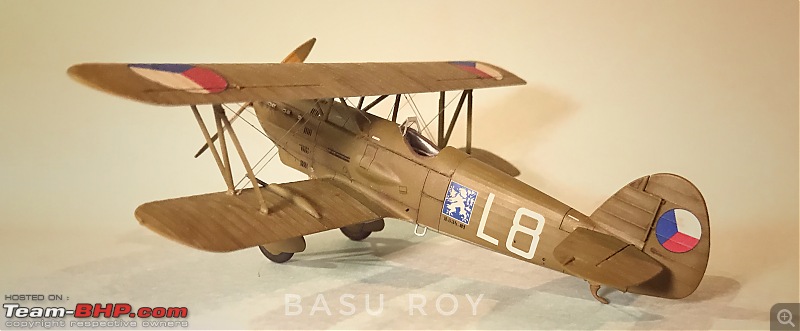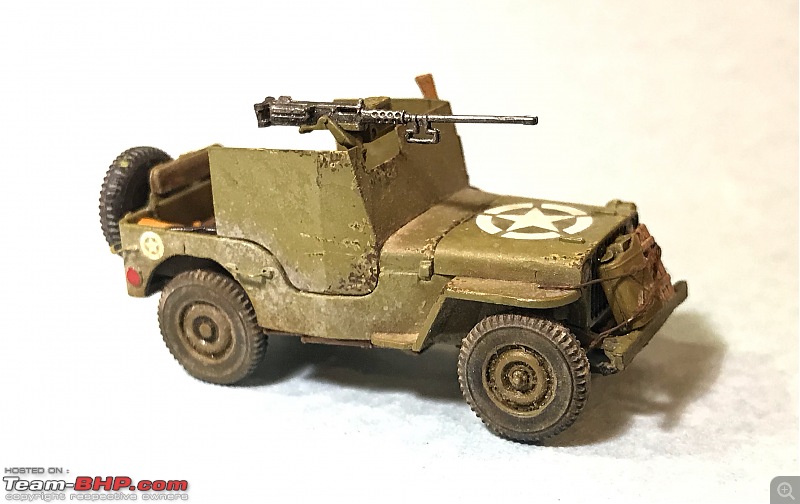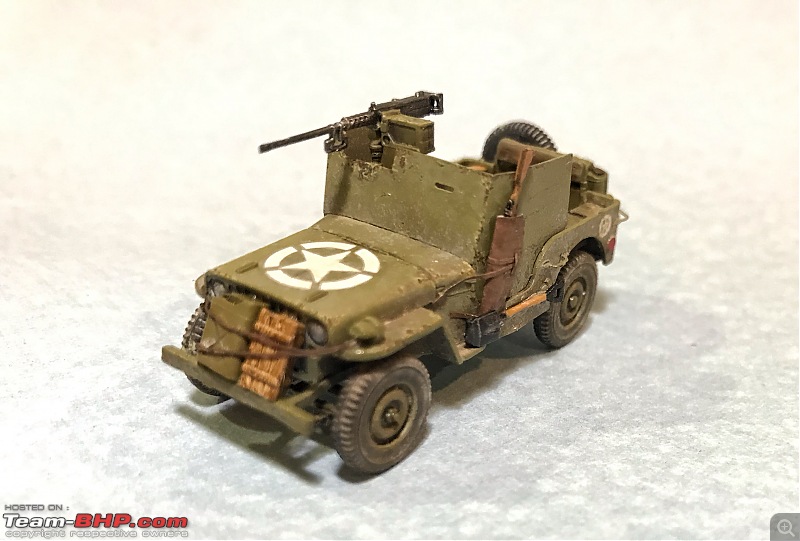Hawker Seahawk FGA.6 Naval Fighter :: 1:72 scale
A beautiful scale model custom made by our very own member Basuroy. Specially finished in hand painted 'weathered' condition as the aircraft must have looed in the 1971 war. Exquisite attention to detail. Congratulation @Basuroy, you are an artiste.
The Seahawk was a single engine, straight wing streamlined design with wings set at mid-frame. Being a naval aircraft it had folding wings that folded up just outside the air intakes to reduce the deck footprint and thus accommodate more aircraft within the confines of a hangar below decks. The Rolls Royce Nene turbojet engine was mounted in the fuselage centre fed by air intakes on the sides and with the exhaust (which propels the jet along) bifurcated into left and right tail pipes. This unique configuration of bifurcated tailpipes allowed better centre of gravity envelope with mid-mounted engine, fuel tanks in the wings (also mounted in the centre) and fuel tanks forward & behind the engine balanced each other thus also contributing to maintaining the C of G as the machine burned through its fuel. The pilot sat right up front under a bubble canopy that gave him unrestricted almost 360 degree view and a good view straight down too. The avionics (aviation electronics) were simple even for the time - no radar, no guided missiles and navigation by mental maths. It sported an arrestor hook under the tail.
The Seahawk was designed by the legendary Sir Sydney Camm who also designed the Hawker Hurricane (World War II), Hawker Hunter and the Hawker Harrier jump jet. The first prototype Seahawk flew in 1949 and it served with the Royal Navy from 1953 to 1963 and was blooded in the infamous Anglo-French invasion of the Suez canal in 1956. The aircraft also served with honours with the Dutch Navy onboard HNLMS Karel Doorman, a carrier that was similar to INS Vikrant, till 1964 and with the West German Navy till the mid-1960s.
Compared to contemporary aircraft such as the North American Sabre & the Mig-15 the Seahawk was slower, climbed less enthusiastically and was more of a ground attack aircraft than an interceptor. I cannot comment on manoeuvrability as the occasion to test versus each other never arose. The low wing loading of 48 to 58 lbs/ sq ft would have aided manoeuvrability but the modest power to weight ratios would have detracted from it. Where it excelled in was in being very stable and trouble free in flight, having long legs relative to the first generation jets and it could carry a reasonable load (for its era) to earn its stripes as a fighter ground attack weapon.
The Indian Navy needed to select a light naval fighter bomber from the types available with the British or the French. The Americans who operated the biggest carrier fleet (then & now) were not inclined to sell their machines given our non-aligned stance. Vikrant was fitted with a short stroke steam catapult (ie lower powered one) that is used for launching aircraft into the air from a short ~200 feet run. India wanted a long stroke steam catapult (ie higher powered one) which the British refused point blank with a crisp statement that the Indians need to learn to walk first before they can run! This limited our choice to basically the Hawker Seahawk from the UK and the excellent but inaccessible American Douglas Skyhawk from USA. So we went with the British Seahawk. The French Dassault Etendard was evaluated but could not be launched at full weight with a short catapult.
Dimensions
Crew: One
Length: 39 ft 8 in
Wingspan: 39 ft 0 in /13 ft 4 in when folded
Height: 8 ft 8 in
Wing area: 278 ft²
Weights
Empty weight: 4,409 kg
Loaded weight clean: 5,996 kg
Max. take-off weight: 7,348 kg
Powerplant
Type: 1 × Rolls-Royce Nene 103 turbojet,
Thrust: 5,440 lbf (2467 kgp) at sea level
Performance
Maximum speed: 965 km/h at sea level
Range: 770 km w/o drop tanks; 685 nm 1285 km with underwing drop tanks;
Combat radius: 370 km with weapons & reserves
Service ceiling: 44,500 ft
Rate of climb: 5,700 ft/min
Wing loading: 48 lb/ft² clean / 58lbs/ft2 fully loaded
Thrust/weight: 0.38 clean
Over 70 Seahawks flew with the Indian Navy and served with distinction in 1971 war of Liberation of Bangladesh.
You can read the full story of the Seahawk with the IN here:
https://www.team-bhp.com/forum/comme...dian-navy.html (Indian Aviation - Hawker Seahawk with the Indian Navy)
The Seahawks over 10 days mounted 160 ground attack sorties on the ports of Chittagong, Khulna, Mongla and Chaina. They attacked and disabled the main airfield at Cox's Bazar and the airport at Chittagong cratering the runways and destroying the control towers and other facilities. Through this the Seahawks prevented the PAF from using these airstrips thus protecting themselves from Pakistani Sabre's. They attacked ships and barges carrying enemy troops and ammunition. Dozens of small and medium merchant ships, barges, coastal vessels and two Pakistani Navy gun boats were sunk thus making the Pakistani commander Lieutenant General Niazi realize that escape or re-supply southwards via the sea was not an option and with the Indian Army speeding in on the other three sides surrender was a sensible alternative. The Seahawks operated with no loss though they faced ground based anti-aircraft fire on all missions. Six Seahawks suffered some damage but all made it back to INS Vikrant. Typical ammunition types deployed were 500 lbs (227 kgs) bombs, 127mm rockets and the ubiquitous 20mm cannon shells.
The IN owes a lot to the venerable Hawker Seahawk. It laid the foundation of todays carrier aviation with MiG-29K's
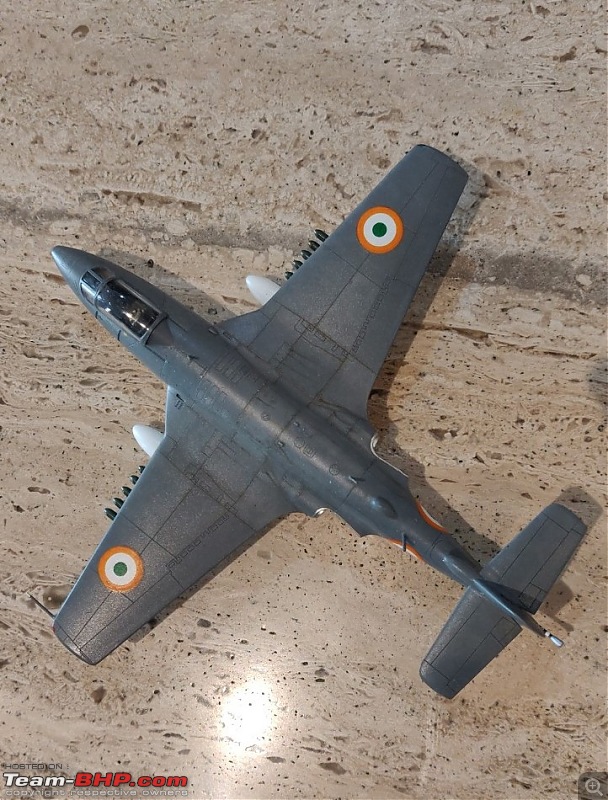
Clean lines, centered engine, 360 degree cockpit view

10 127mm rockets wit ha warhead of 60 kgs each. 5 on each wing. Long range drop tanks.
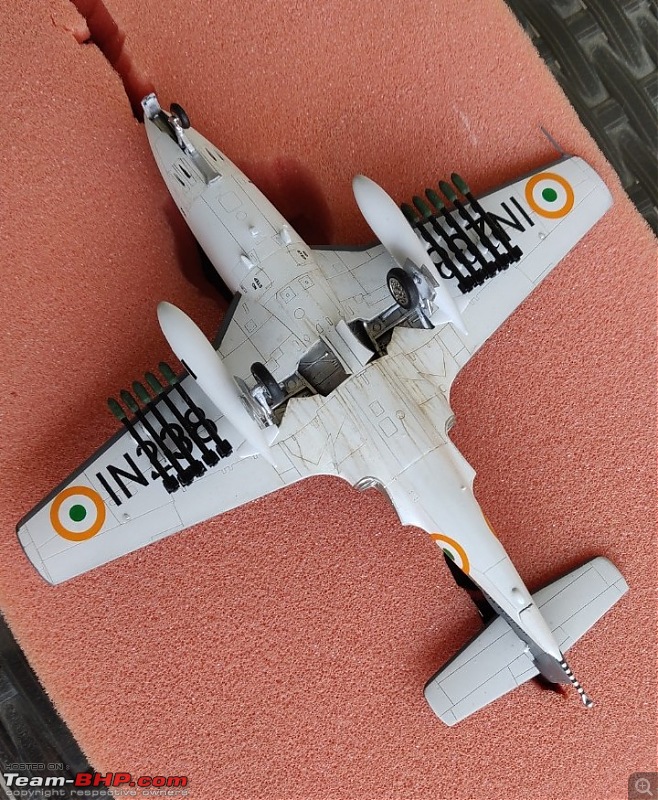
The carefully painted weathered underbelly. Not under carriage, rockets and tanks. Mounted on my foam MRO stand :-)
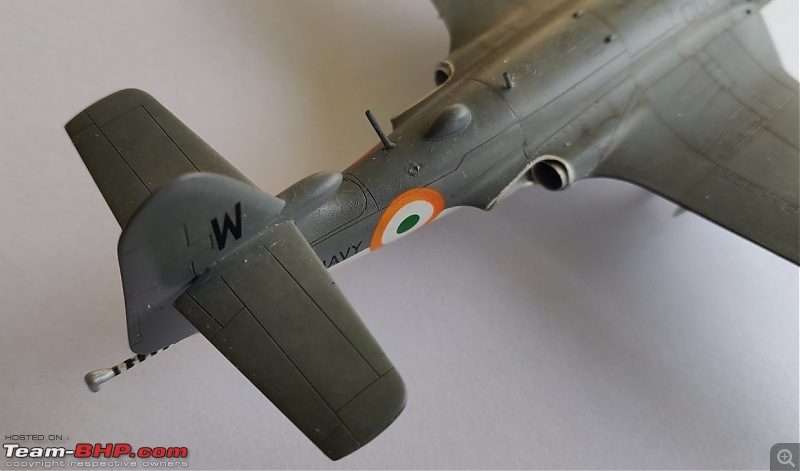
Tail hook.
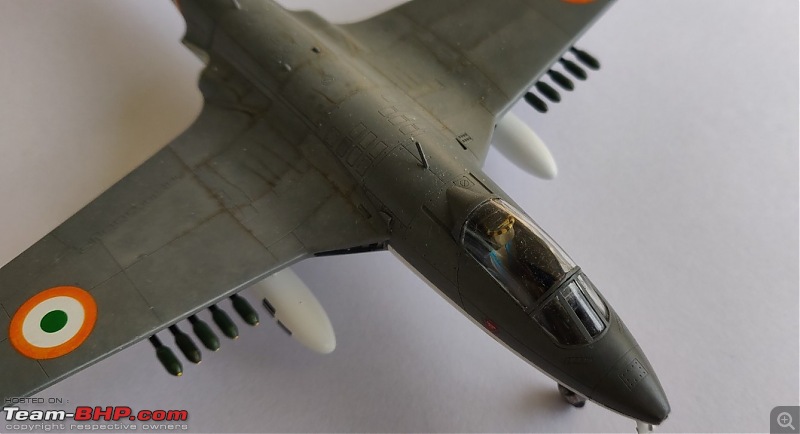
Nose section. Detailed cockpit inside.
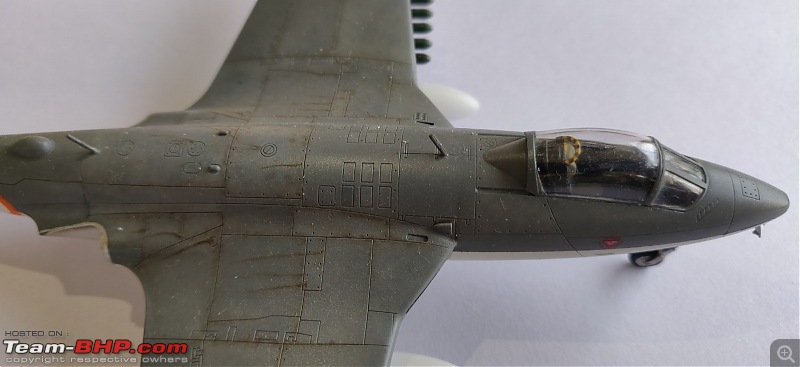
Note details.
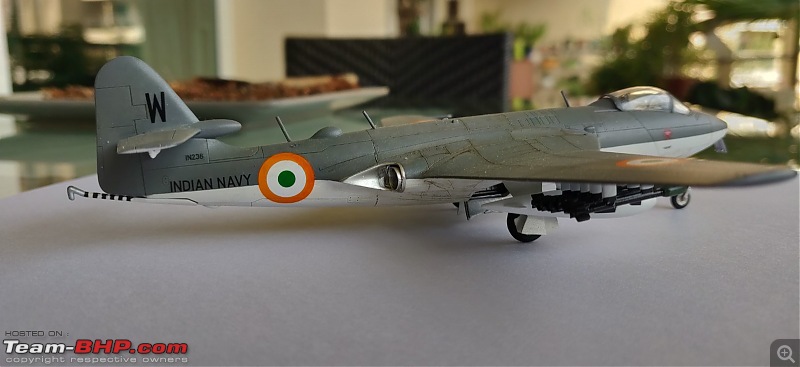
Aft section. Bifurcated jet exhaust pipes. Probably a unique design.
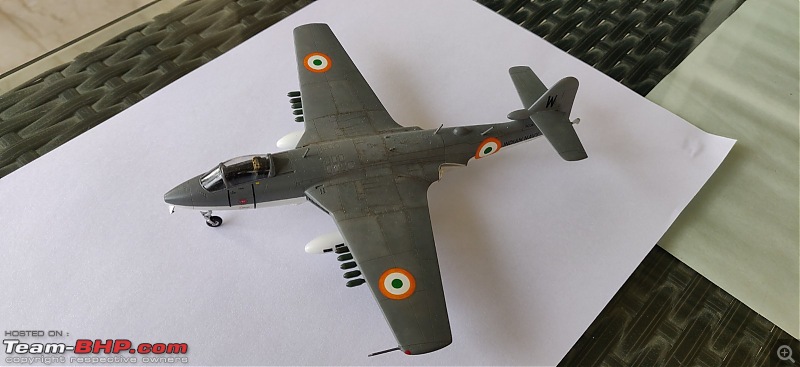
With this I'm starting a tri-colour only collection spree. More to come. :-)
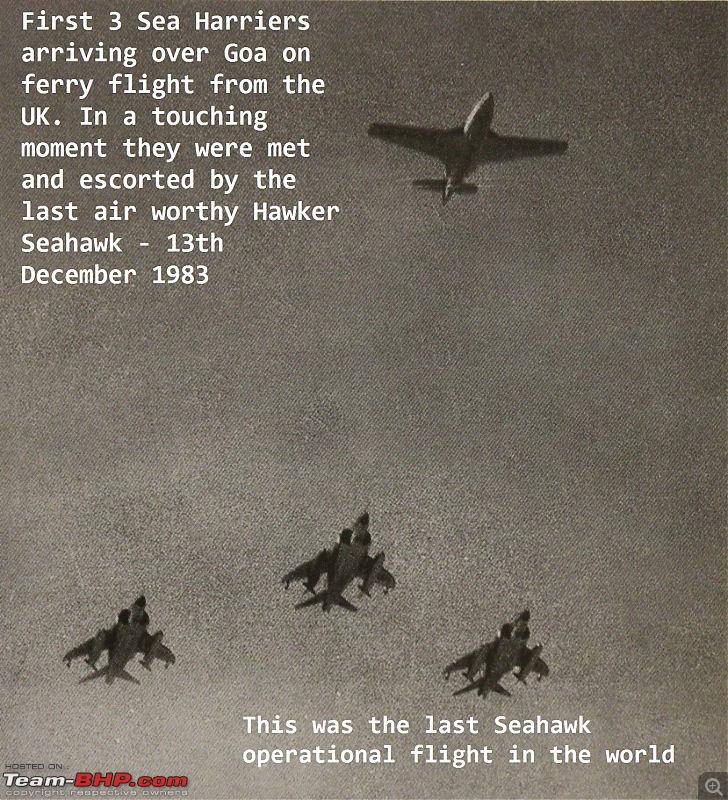
Seahawk IN 238 was the last functioning Seahawk in IN service the aircraft that flew the last operational Seahawk sortie in the world. She went up to receive the incoming Hawker (now BAe) Sea Harriers as they approached Goa.
Compliments to @basuroy for building an outstanding model

 (4)
Thanks
(4)
Thanks

 (3)
Thanks
(3)
Thanks
 (2)
Thanks
(2)
Thanks

 (2)
Thanks
(2)
Thanks
 (4)
Thanks
(4)
Thanks

 (1)
Thanks
(1)
Thanks
 (1)
Thanks
(1)
Thanks

 (8)
Thanks
(8)
Thanks
 (3)
Thanks
(3)
Thanks
 (2)
Thanks
(2)
Thanks
 (3)
Thanks
(3)
Thanks

 (3)
Thanks
(3)
Thanks
 (3)
Thanks
(3)
Thanks
 (6)
Thanks
(6)
Thanks

 (1)
Thanks
(1)
Thanks





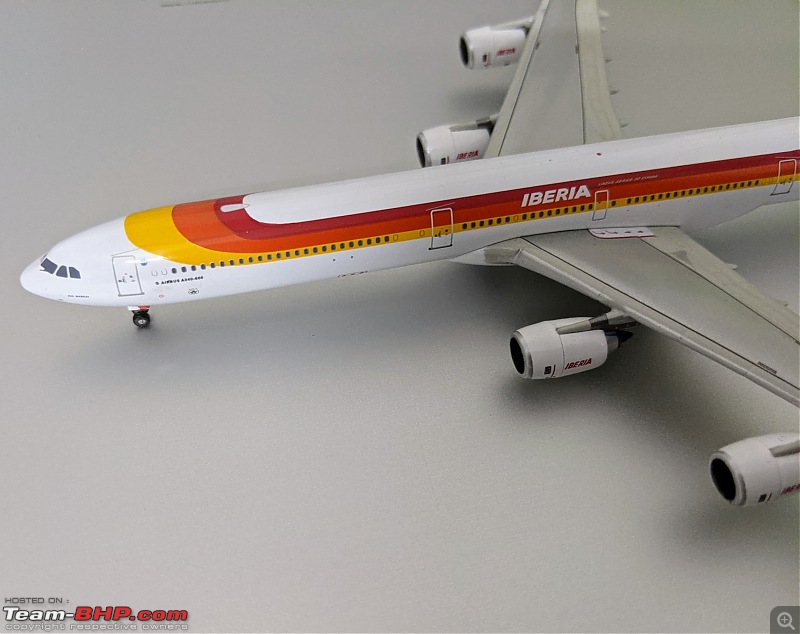
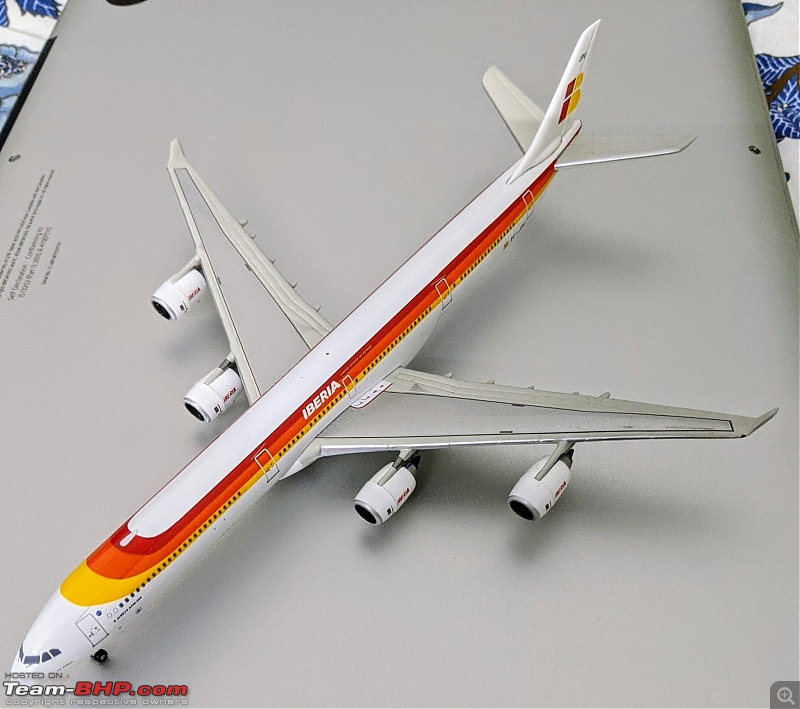
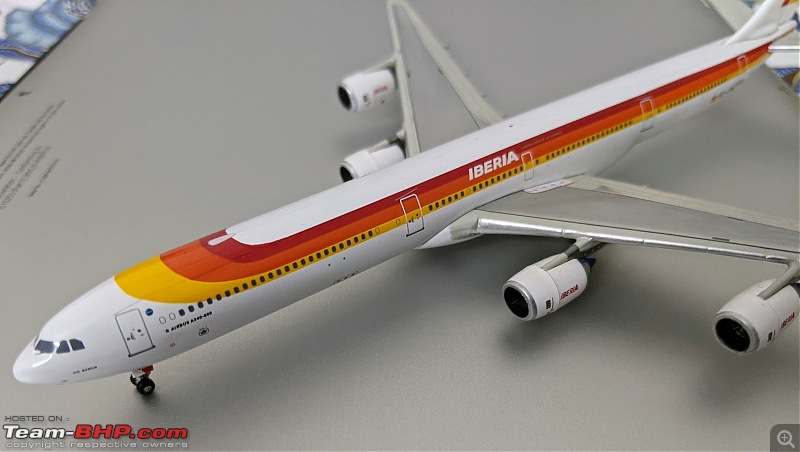
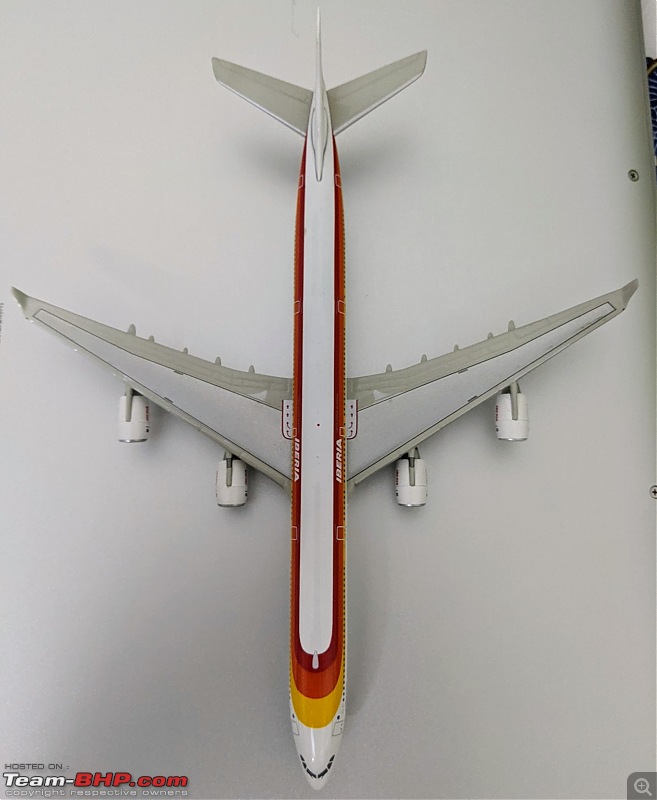
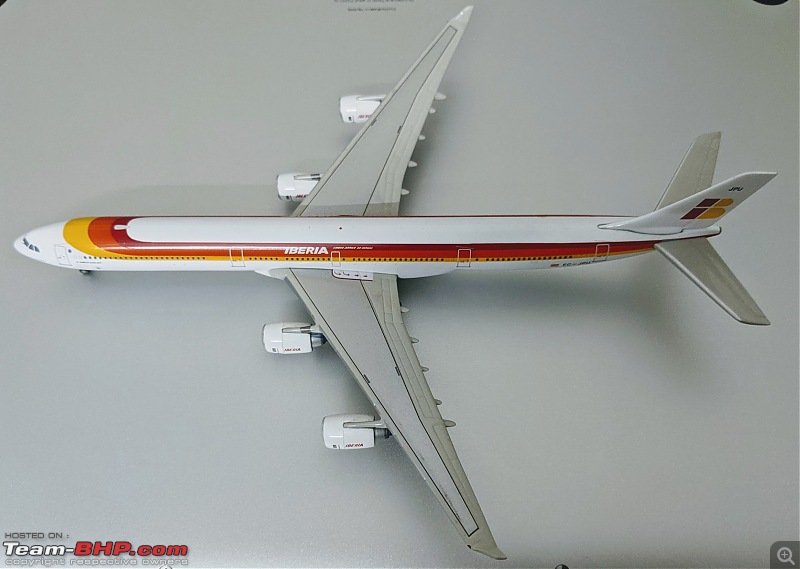

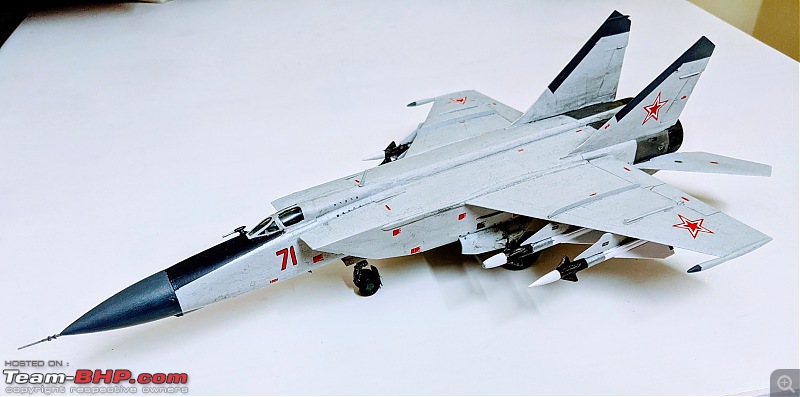
 A beautiful aircraft. In days gone by my team has worked on this tail number. I usually do not remember tail numbers after all these years but this incredibly beautiful aircraft was being towed into the hangar while I was visiting and it stuck in my head because of JP - Jay Prakash (Narayan). Fitting in a A340-600 was always an art as widebody hangars are typically sized for a 747 and no one thought that a plane longer than that was likely. My boys were very good at this squeezing in. A A340-600 is about 5-metres longer.
A beautiful aircraft. In days gone by my team has worked on this tail number. I usually do not remember tail numbers after all these years but this incredibly beautiful aircraft was being towed into the hangar while I was visiting and it stuck in my head because of JP - Jay Prakash (Narayan). Fitting in a A340-600 was always an art as widebody hangars are typically sized for a 747 and no one thought that a plane longer than that was likely. My boys were very good at this squeezing in. A A340-600 is about 5-metres longer.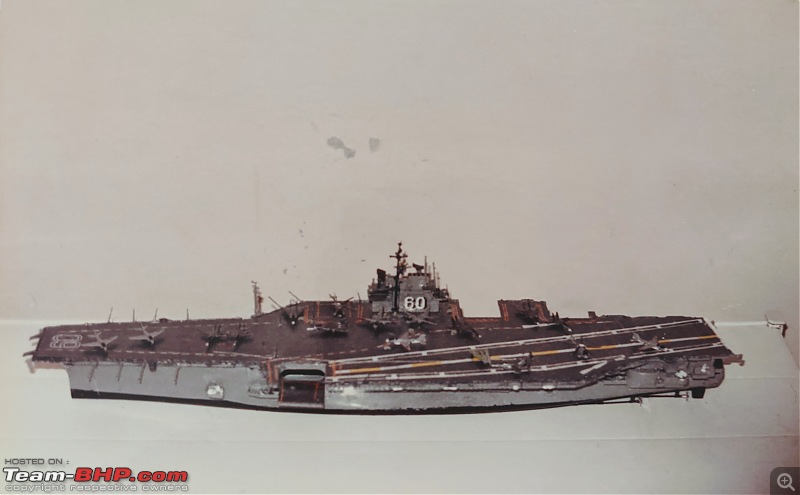
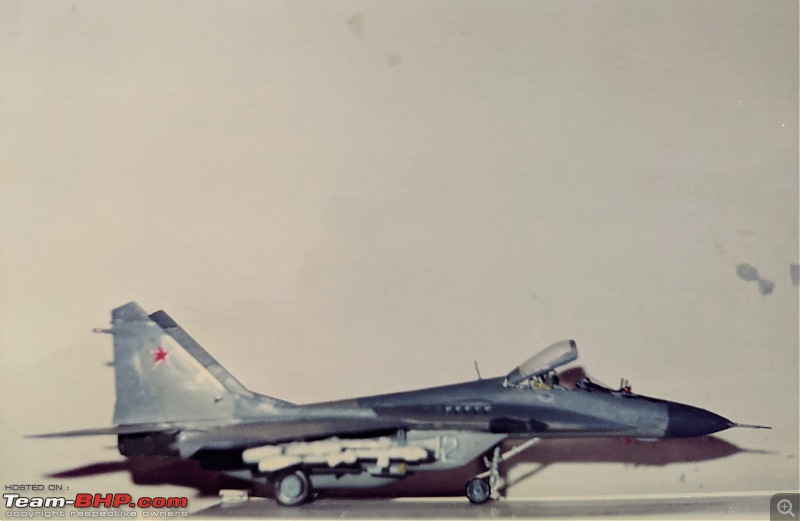
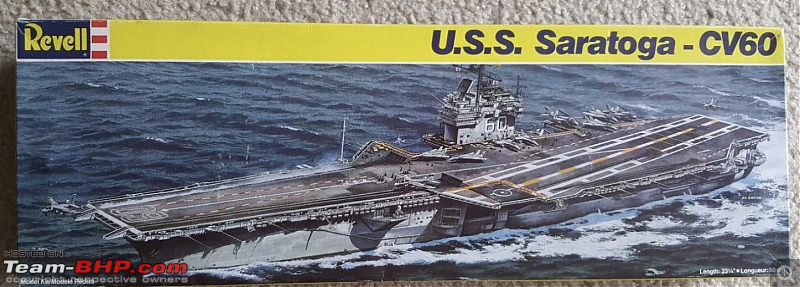
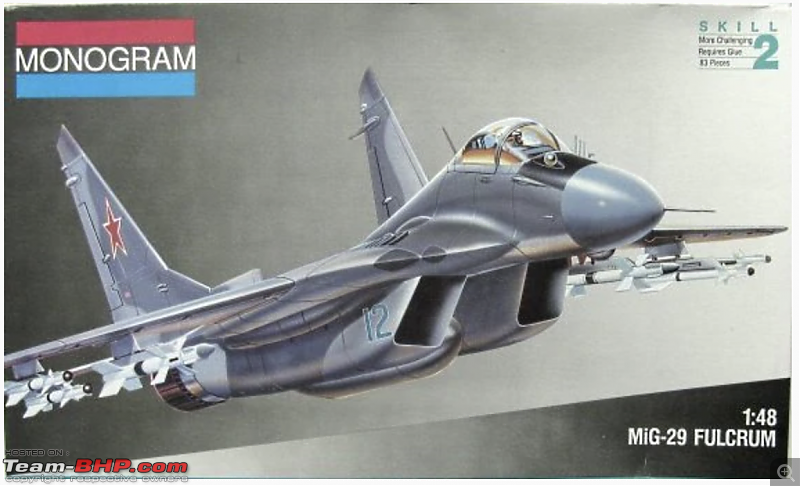










 Loved the context of the aircraft in the Indian Navy. The bubble canopy must have provided an excellent view for the pilot which was lacking in many fighter aircraft of the time.
Loved the context of the aircraft in the Indian Navy. The bubble canopy must have provided an excellent view for the pilot which was lacking in many fighter aircraft of the time. ).
).